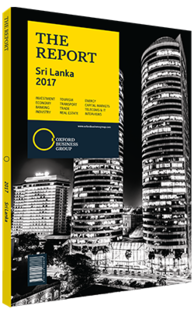Indrajith Coomaraswamy, Governor, Central Bank of Sri Lanka: Interview

Interview: Indrajith Coomaraswamy
How resilient is the domestic economy to external shocks like the decline in commodity prices?
INDRAJITH COOMARASWAMY: At present, sluggish global growth has resulted in dampened external sector demand, which, together with domestic developments, has contributed to the persistence of the external current account deficit. The prevalence of low commodity prices is another factor that has impacted many emerging and developing market economies, including Sri Lanka. As tea, rubber and coconut are some of Sri Lanka’s traditional exports, low commodity prices have resulted in lower earnings from commodity exports.
However, Sri Lanka is largely dependent on imported energy, and therefore has received the dividends from lower oil prices as an importer of crude oil. This has mitigated the adverse impact of lower export earnings somewhat. At the same time, a significant portion of Sri Lanka’s foreign exchange receipts are remittances from migrant workers, of which a considerable share are generated in oil-exporting countries. The recent moderation of such remittances – as well as lower demand for tea and rubber – can be considered as knock-on effects of the slowdown in the Middle East.
What policy measures are being considered to counter the effects of a rise in US interest rates?
COOMARASWAMY: Although the impact of the initial “taper tantrum” on the Sri Lankan economy was limited, the expectation that the US Federal Reserve would commence raising interest rates and its eventual realisation saw a considerable outflow of foreign investments from the rupee-denominated government securities market. While this trend subsided towards the middle of 2016, the increase in US interest rates in December 2016 has again created some uncertainties in global financial markets; however, this has had a lesser impact on us than the previous one.
Sri Lanka has taken several measures to mitigate the adverse effects of further increases in US interest rates. The foreign exposure limits in the government securities market, which were at 12.5% of the total amount outstanding, have already been reduced to 10%. The exchange rate has been allowed to move with greater flexibility to reflect market conditions.
The country also entered into a three-year IMF programme under an extended fund facility, aimed at supporting the balance of payments position and the government’s reform agenda. In addition to these short-to-medium-term measures, the government has announced a broad medium-to-long-term growth framework and is in the process of implementing it, which would help strengthen the economy and enhance its resilience over time. Establishing new economic partnerships with large economies in the world while extending existing partnerships will also be crucial to improving the country’s future resilience.
How will 2016’s Microfinance Act provide better oversight and regulation of the segment?
COOMARASWAMY: The microfinance landscape is quite diverse and there are a variety of institutions providing microfinance services in Sri Lanka, including banks, finance companies, cooperatives, state-run entities, microfinance companies, microfinance non-governmental organisations (NGOs), societies and community-based organisations. Some of these institutions were regulated by the Central Bank and by the Cooperative Development Department, while others were not. Therefore it was decided to regulate the next layer of microfinance institutions – microfinance companies and microfinance NGOs.
The benefits of the Microfinance Act include improving financial services to low-income people and microenterprises – thereby increasing financial inclusion – strengthening the soundness and systems of microfinance institutions, enabling microfinance institutions to access a broader array of sources of funding and greatly increasing the safety of deposits.
You have reached the limit of premium articles you can view for free.
Choose from the options below to purchase print or digital editions of our Reports. You can also purchase a website subscription giving you unlimited access to all of our Reports online for 12 months.
If you have already purchased this Report or have a website subscription, please login to continue.

